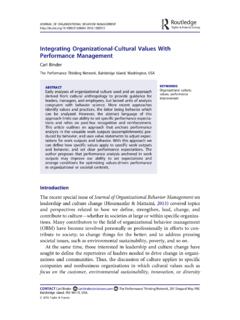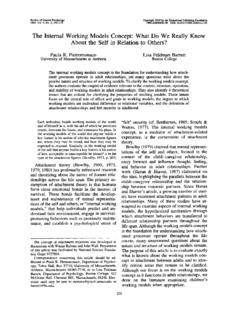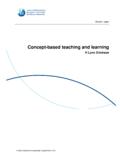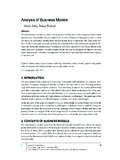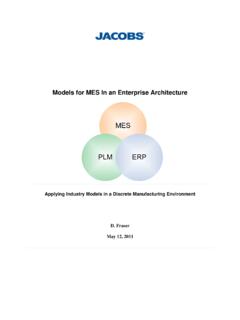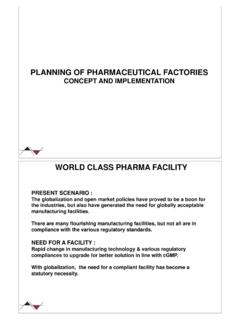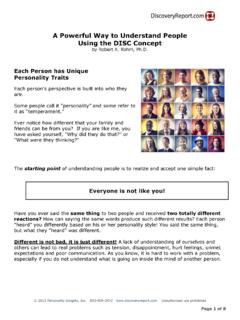Transcription of HPTModels:AnOverview ofthe MajorModelsintheField
1 SEPTEMBER 2002As the field of human perfor-mance technology (HPT)begins to gain more main-stream attention in the eyesof those charged with improving organi-zational efficiency, questions arise abouthow to put these concepts and theoriesinto practice. Several recent articles(Langdon, 2000; Chevalier, 2000) havedescribed how HPT can be used in anorganization. This article aims to iden-tify the major models in the field andexamine the ideas and beliefs that havelead to their conception, development,and acceptance. For the purposes of this article, HPT isdefined as a systematic approach toimproving productivity and competence,through a process of analysis, interven-tion selection and design, development,implementation, and evaluationdesigned to influence human behaviorand accomplishment (InternationalSociety for Performance Improvement,2000).
2 The article will focus on HPT as aprocess that bridges the gap betweenwhat is and what should be in humanperformance systems (AppliedPerformance Improvement Technology,2000).HPT ModelingModeling has traditionally been an inte-gral part of the instructional designprocess. Because many of the early prac-titioners of HPT came from the field ofinstructional technology, it is not sur-prising that HPT process modeling has migrated and evolved from Branch(1997) statethat the role ofmodels in instructionaldesign is to provide us with conceptualand communication tools that we canuse to visualize, direct, and manageprocesses (p. 18). The key concept hereis the ability of the individual whenlooking at any complex activity, to con-ceptualize a myriad of causal relation-ships and chart them in some mannerthat can be communicated to others.
3 Agiven model s criterion must enable HPTanalysts to accurately conceptualize asuspected performance problem in agiven business environment. The abilityto visualize and then communicate theprocess logic to others will be the truemeasurement of any HPT model s effec-tiveness and suitability for and Keeps (1992) report thatearly HPT practitioners attempted to uselinear instructional design models todescribe performance technologyprocesses. These linear models did notalways accurately describe the environ-ment or inter-relationships in sophisti-cated, multifaceted business a result, the early pioneers in theHPT field began to develop their ownunique models. The diversity and com-plexity of the analyzed environments,coupled with different perspectives andbackgrounds of the profession s pio-neers, have created a large number ofmodels, many of which are still emerg-ing and evolving.
4 HPT Models:An Overviewof theMajor Models in the Fieldby Frank S. Wilmoth, Christine Prigmore, and Marty BrayHPTHPT PioneersThe works of Gilbert, Harless, Mager, and Rummler becamethe principles of the foundations for performance analysisand HPT modeling theory (Rosenberg, Coscarelli, &Hutchinson, 1992). Many have acknowledged ThomasGilbert to be the Father of Performance Technology (Dean,1998). Gilbert felt that improving the performance of peoplemust begin with identifying and resolving the environmen-tal barriers, thus enabling the people (performers) to achievemaximum performance (Dean, 1997). Another performance technology pioneer who continuedwith Gilbert s diagnostic approach was Joe Harless. Harlessbelieved that understanding the cause of a problem shoulddrive any solution (Ripley, 1997).
5 This belief would eventu-ally become the process of front-end analysis as reflected inhis first performance technology process model (Figure 1).This model had a clear focus on the early determination ofgoals and performance during the analysis phase. Later,Harless revised his original model so that it included thefour phases of analysis, design, development and testing,and implementation and evaluation, which became wellknown by its abbreviation, ADDIE (Figure 2). Harless pro-posed to the performance technology disciples that a part-nership and business focus should exist in order to applythe most cost-effective (1997a) reports that Robert Mager s book, PreparingInstructional Objectives,written in 1984 and later revised in1997, revolutionized instructional design and performanceimprovement and is considered to be the standard for theinstructional design profession.
6 Mager introduced the notionthat instructional designers should move beyond determin-ing what instructors should teach; rather, they should focuson understanding what learners should be able to do as aresult of the instruction. His work began to move the HPTfield toward human performance objectives. His modelbreaks down performance objectives into three components:performance, conditions, and criterion (Figure 3). Mager feltthat the performance element is what the learner should beable to do; the conditions element comprise the situationsunder which performance will occur, and the criterion ele-ment is the standards or levels of acceptable model helped to shift analysis away from the instruc-tion process itself and toward the results of instruction thatlead to a change in learner performance.
7 It also introducesthe notion that human performance must have clear, mea-surable standards applied within definable addition to his model for instructional objectives, Mageralso developed a flow chart for analyzing performance prob-lems (Mager & Pipe, 1984). In his model , Mager presents aPerformance Improvement Volume 41 Number 817 Figure 1. Early HPT model .(Source: Ripley, 1997)Figure 2. Later HPT model .(Source: Ripley, 1997)Figure 3. Mager s model for Instructional Objectives.(Source: West, 1997a) SEPTEMBER 2002series of steps that can help identify and correct perfor-mance problems. Mager cautions that the model should notbe interpreted literally but should be used as a guideline foridentifying and solving performance problems. While muchof the flow chart is linear in nature, parts of it are not.
8 Thesenonlinear components of the model are presented as sub-groups that are linked together by a series of backgroundarrows that link all of the various groups and subgroups ofthe model (Figure 4).Finally, there are the multiple contributions advanced byGeary Rummler. West (1997b) purports that Rummler likenedorganizations to ecosystems where every component is inter-related and linked together. Rummler felt that analysis shouldaccount for the fact that organizational performance and indi-vidual performance are unique and require different solutions(Rosenberg et al., 1992). He believed that organizational per-formance is as important as individual Rummler s nine performance variables model (Figure 5),the organizational analysis has three levels: the organizationallevel, the process level, and the job/performer maintained that the three levels are inter-relatedacross different functions within the organization (West,1997b).
9 The three performance levels must be simultane-ously considered and addressed before the organizationalperformance problems can be solved. Rummler details nineperformance variables under the categories of goals, design,and management. At the job/performance level, a linearlogic begins with input to the performer, who then performsthus creating output, which results in consequences. A feed-back loop communicates consequences back to the per-former. Rummler has identified six factors that affect humanperformance: performance specification, task support, con-sequences, feedback, skills/knowledge, and individualcapacity. Rummler s thorough consideration of these humanperformance factors establishes a solid foundation of logicfor others to build on.
10 The work of these early pioneers in making a distinctionbetween a training gap and a performance gap laid thegroundwork for future practitioners to construct and testnew models. In addition, their establishment of the linkbetween individual performance and organizational perfor-mance helped to cement the acceptance and credibility ofHPT of ModelsThe diversity in content and structure of the various HPTmodels allows for a number of different classificationFigure 4. Mager s Performance Analysis Flow Chart.(Source: Mager & Pipe, 1984)Figure 5. Rummler s Nine Performance Variables.(Source: West, 1997b)*Arrangeformaltraining*Arrangeprac tice*Arrangefeedback*Changejob*Arrangeon -jobtraining*Transfer or terminate*Removepunishment*Arrangepositi veconsequence*Arrangeconsequence*Removeo bstaclesschemes.


